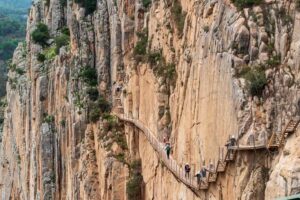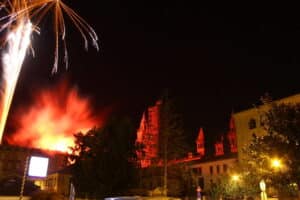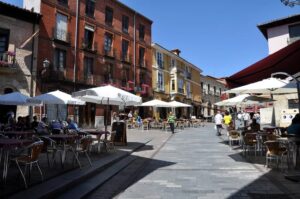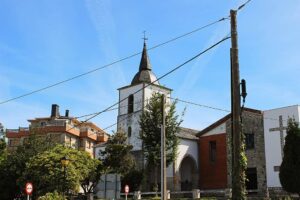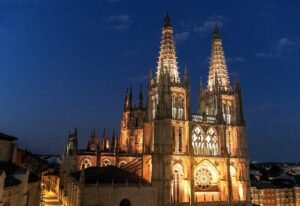One of the peculiarities that makes the Camino de Santiago an extraordinary trip is that it has different routes to get to Santiago. And precisely the north roadDespite being one of the most demanding paths, it is one of the most beautiful routes.
this journey covers the entire north of the Peninsula and leaves behind emblematic cities such as San Sebastián, Irún, Bilbao, Santander, Gijón, Santillana del Mar and Llanes. On this route, the pilgrim must be prepared for paths that are somewhat difficult to navigate, but its extraordinary scenic beauty is worth the effort.
In addition, on the Camino Norte you will not only be able to enjoy exuberant landscapes of sea and mountains, full of forests. It is also one of the Jacobean routes with a important religious architecture and of marked interest for the tourist.
In this guide we are going to talk about the churches of the Camino del Norte most iconic.
Índice de contenidos
- 1 Most outstanding churches and cathedrals on the Northern Way
- 1.1 Hermitage of Guadalupe
- 1.2 Iglesia de Santa Maria
- 1.3 Cathedral Basilica of Santiago de Bilbao
- 1.4 Basilica of Begoña
- 1.5 Collegiate Church of Santa Juliana, in Santillana del Mar
- 1.6 Oviedo Cathedral, Asturias
- 1.7 Mondoñedo Cathedral, Lugo
- 1.8 Monastery of San Salvador, in Lourenzá
- 1.9 Monastery of Santa Maria, in Sobrado dos Monxes
Most outstanding churches and cathedrals on the Northern Way
El Camino de Santiago from Sarria It has imposing churches that impress the visitor with their architectural beauty and cultural and historical significance. Likewise, the Northern Way displays Medieval art and architecture. You will be able to appreciate it through different cathedrals and churches that you will find on the way to the tomb of the Apostle Santiago.
These religious constructions show an incomparable beauty. In many cases, they were the seat of bishoprics, so the authorities spared no expense to achieve artistic quality. If you are interested in learning more about this religious architecture, here you will discover the most emblematic churches and monasteries on the Northern Way.
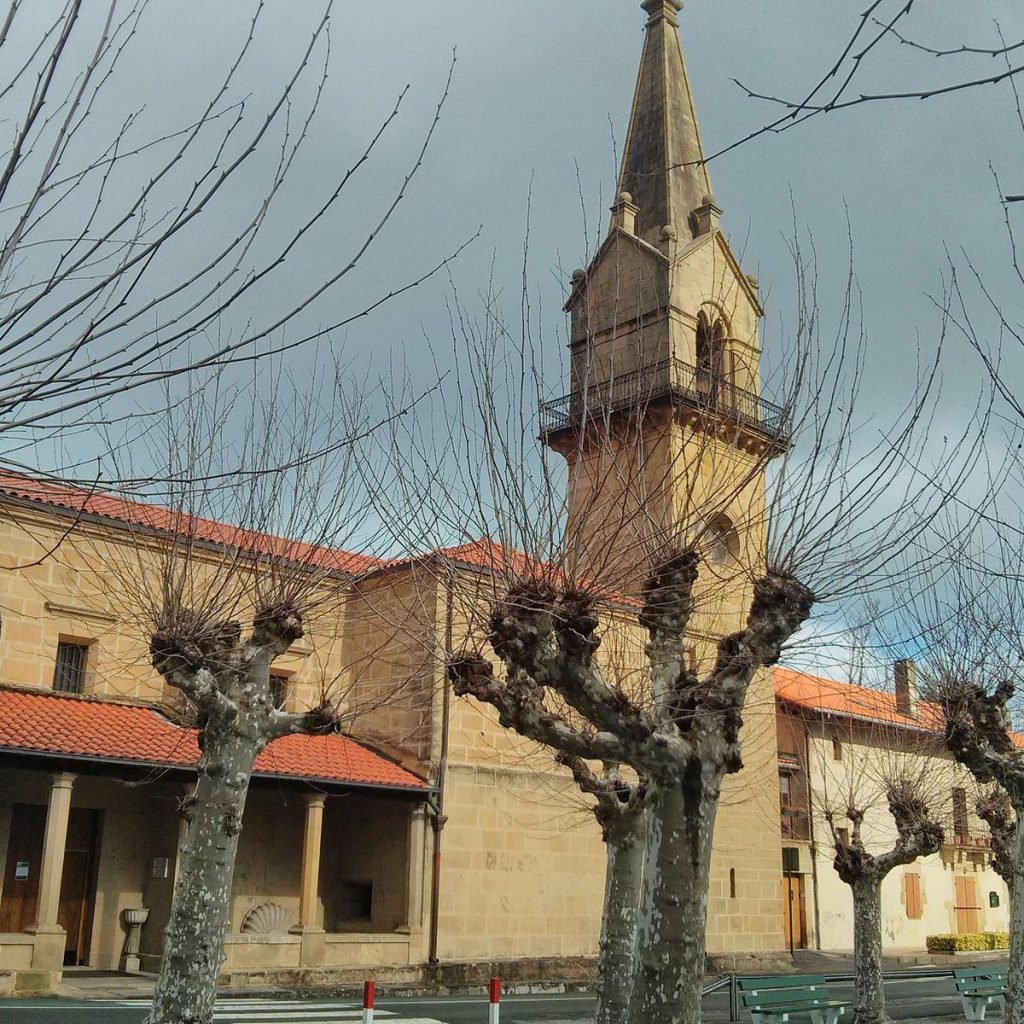
Hermitage of Guadalupe
One of the obligatory visits if you do the Camino de Santiago organized is this imposing construction located in Hondarribia. It is already mentioned in texts from the year 1526. It is well known, because every September 8 there is a procession to the hermitage that has been repeated since the year 1638.
This Church has been rebuilt several times, it has a single nave with a transept and a flat front. The current temple may replace an older one from the XNUMXth century through a reconstruction dating from the eighteenth century.
One of the most significant elements is the stone capital of contemporary invoice that dates from the year 1860. For their part, the supports, corbels and cornices seem to correspond to the XNUMXth century.
Inside, two stand out side altarpieces that come from the parish church. These reflect the very late Renaissance style and the main altarpiece belongs to the Baroque.
Iglesia de Santa Maria
This architectural monument is located in Castro Urdiales. It is a magnificent building with Gothic style built at the beginning of the XNUMXth century. It is close to the castle, the lighthouse and the fishing port of Castro-Urdiales.
It’s a basilica plan building which you can access by a staircase flanked by two towers. Besides, consists of three ships. Of these, the central one has a double height in relation to the lateral ones. This church was built in honor of Santa María de la Asunción.

Cathedral Basilica of Santiago de Bilbao
Is the Bilbao Cathedral. was declared Heritage as an architectural element associated with the roads of Santiago in northern Spain. Likewise, it is an Asset of Cultural Interest since 1931.
The construction of this basilica dates from the end of the XNUMXth century to the beginning of the XNUMXth century. However, later reforms and additions have been made.
One of the attractions of the Camino de Santiago de Norte is cross the Puerta del Ángel of the cathedral, traditionally known as Pilgrims Gate. A scallop shell crowns this entrance.
Basilica of Begoña
La Basilica of Begoña accepts the name of the Mother of God of Begoña, Marian dedication and patron saint of Bilbao. She is very popular among the city’s parishioners, who affectionately know her as Amatxu.
The construction of the basilica dates back to the XVI century and it was raised thanks to numerous donations. It was also modified on numerous occasions until it reached the appearance it looks today for parishioners and visitors.

Collegiate Church of Santa Juliana, in Santillana del Mar
It is a Romanesque and Gothic style construction that It dates from the end of the XNUMXth century and beginning of the XNUMXth.. In principle, it was built on top of an old monastery (which guarded the relics of the martyr Santa Juliana)
It is currently National Monument, since it was declared since 1889. It stands out for the sculptural decoration of its cover, the capitals and its cloister.
Oviedo Cathedral, Asturias
This church is known as Sancta Ovetensis, it is the Cathedral of San Salvador in Oviedo. It is a construction of Gothic style that has a notable importance in the territorial scope. It is one of the most important cathedral complexes in all of Spain.
This work of art has more than 1.200 years of history behind their backs. He has witnessed the Christian kingdoms of the north of the Iberian Peninsula throughout the Middle Ages.

Mondoñedo Cathedral, Lugo
La Mondoñedo Cathedral It is considered one of the most beautiful buildings in Galicia. One of the peculiarities of this cathedral is its perfect proportions and low height. Not surprisingly, it was named “Kneeling Cathedral”. It was even declared a national historical relic in 1902.
Monastery of San Salvador, in Lourenzá
This Benedictine monastery is located in the town of Lourenzá and was declared A Cultural. This construction has an abbey, a convent, two cloisters, a patio, as well as several chapels and a church.
The work is from Romanesque and Baroque style. It was founded in the XNUMXth century by Osorio Gutiérrez, known as the Holy Count. It also stands out for its Sacred Art Museum.

Monastery of Santa Maria, in Sobrado dos Monxes
Another religious architectural work that we should not forget about the Camino Norte is the Monastery of Santa Maria de Sobrado, founded in the year 952. This construction was inaugurated by Hermenegildo Aloitez, Count of Presaras.
In the middle of the XNUMXth century, it underwent a rehabilitation, after being abandoned for a long time. It was also declared National Historical Artistic Monument, and it is one of the most important monasteries in the province of A Coruña. In addition, it is one of the greatest exponents of the Galician Baroque.

